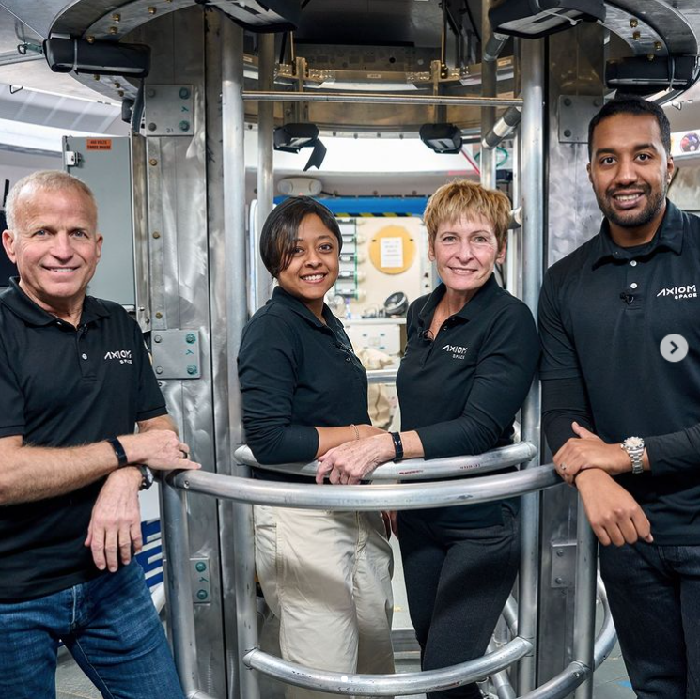In a remarkable historical achievement, Saudi Rayyanah Barnawi has been recognized by Guinness World Records as the First Arab astronaut to travel into space (female). Barnawi was part of the AX-2 scientific mission that launched on May 21, 2023, accompanied by fellow Saudi astronaut Ali Al-Qarni, aboard a spacecraft bound for the International Space Station (ISS) from Cape Canaveral, Florida, USA.
A 34-year-old biomedical researcher, Barnawi has spent her career advancing scientific knowledge, particularly in the field of cancer stem cells. She worked at King Faisal Specialist Hospital & Research Centre (KFSHRC), and holds a bachelor’s degree in genetic engineering and tissue development from the University of Otago in Dunedin, New Zealand, along with a master’s degree in biomedical sciences from Alfaisal University in Riyadh, Saudi Arabia.
During her mission, part of the Saudi Astronaut Program, Barnawi conducted several groundbreaking experiments. These included studying the response of immune cells and how microgravity affects biological processes. Her work heralds a new era of discoveries aimed at benefiting humanity.
In her first message from the International Space Station, Barnawi addressed the world: “This trip does not represent me alone, but rather the entire Arab world and all Saudis. We are living a dream that once seemed impossible, but has become reality.”
Barnawi’s personal journey reflects her strong ties to both Saudi Arabia and her Sudanese heritage, as she was born in Riyadh in 1988 and descends from the Borno tribe, a historical African lineage.
Key experiments conducted by Barnawi during her mission included:
- Blood biomarkers measurement: This study explored the effects of short-term space missions on brain tissue, helping determine the safety of these flights for brain health.
- Telomere length measurement: Focused on understanding how spaceflight affects telomere length, which is linked to aging and disease.
- Intracranial pressure measurement: Using an automated pupillometer to assess the impact of space on skull pressure.
- Electroencephalography (EEG) of brain activity: A portable device was used to examine changes in brain electrical activity during space missions.
- Optic nerve sheath diameter measurement: This experiment sought to monitor any changes in the optic nerve during the mission.
- Cerebral perfusion study: A non-invasive technique was used to measure blood flow in the brain during microgravity.
- Space rainmaking: Investigating the feasibility of generating rain in extraterrestrial environments like the moon and Mars.
- Liquid color diffusion experiment: Studying the movement of liquids in space versus on Earth.
- Space kite experiment: Examining how microgravity affects the dynamics of a kite’s flight.
- Heat transfer patterns: Exploring differences in heat transfer in space compared to Earth.
These experiments continue the Arab world’s legacy of space exploration, from Abbas Ibn Firnas’ flight attempts in the 9th century, to Prince Sultan bin Salman’s space mission in 1985, and Syrian astronaut Muhammad Faris’ spaceflight in 1987.


COMMENTS